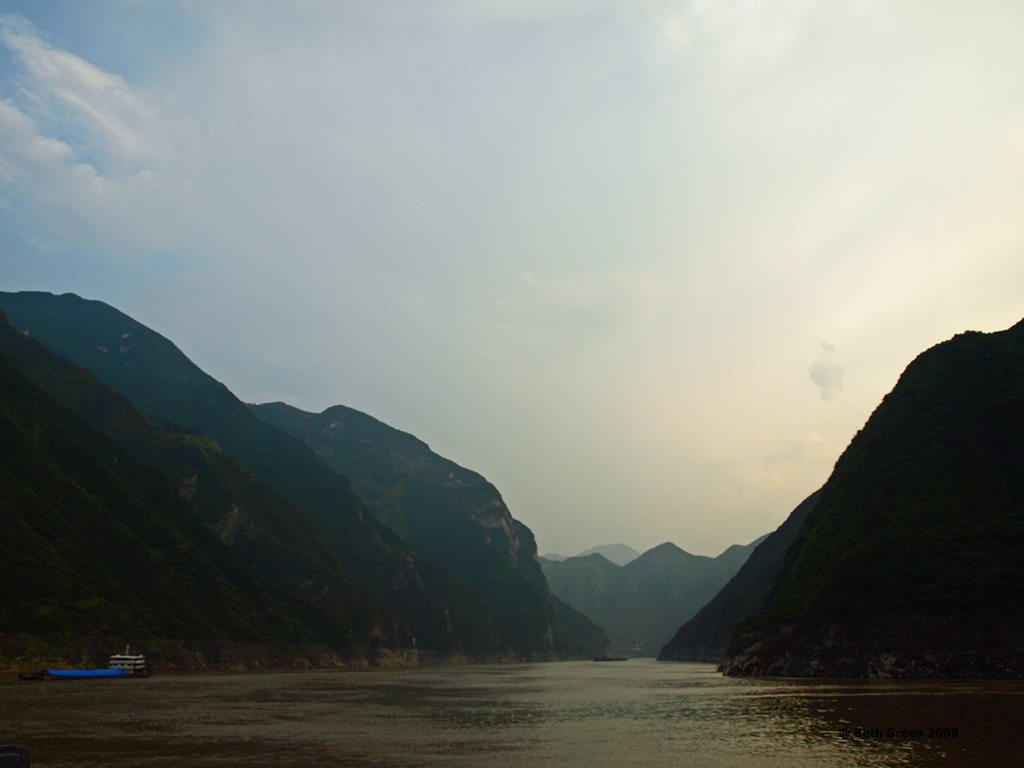By Beth Green
The river is
a metaphor for life—it bubbles forth, small and rocky, then travels the breadth
of human experience to finally release into the unknown. With such universal
imagery, it’s no wonder some of the world’s classic literature takes place
along the banks of a river.
 |
| The Yangtze River |
Huckleberry Finn, The
Wind in the Willows, even the bones of the Lord of the Rings trilogy, take place with travel along a river as
a main theme. Perhaps because of these literary influences, I’ve always been
fascinated by river travel. If there’s a chance to cross a river using a ferry
instead of a bridge, I’ll do it, and river sightseeing trips always get my vote.
Here in Asia,
there’s a wealth of opportunities to explore little-known areas by riverboat,
chances to see riverine culture hidden to the train-and-bus crowd, and
possibilities for contemplating the overall direction in which life—and the
river—is taking you.
Some of the
best river excursions available in Asia, surprisingly, are accessed by public
transport. Taking the Chao Phraya ferry boats is a photo-worthy (and sometimes
spray-showered) way to see a different side of Bangkok. Guangzhou’s ferries to
and fro across the mighty Pearl River give visitors a unique perspective on the
city and the waterborne culture and commerce that have made the area so
successful.
But the true
river adventure in Asia has got to be down the Yangtze River. It’s also one of
the most controversial. One of the world’s longest rivers,
the Yangtze has played an importance that’s hard to overemphasize to Chinese
civilization—people have been living by its fruitful banks for 27,000
years. It’s the longest river in Asia (and, actually, just known as Chang Jiang, 长江, or “long river” by the Chinese). It
stretches from the Tibetan cultural areas of Qinghai province—think grasslands
and herders and big blue skies—through the mountains of Tibet, and Sichuan and
Yunnan provinces, across the sun-scorched industrialized plains of Chongqing,
and Hubei and Jiangxi provinces, until it finally spills out at China’s oriental
pearl, Shanghai.
When China
installed the Three Gorges Dam over the past decade (it’s been in place for
years, but was finally completed only last year), the Yangtze leaped to the
world’s attention. The dam project displaced millions of people who lived upstream, whose submerged
homes you can now sometimes glimpse at the waterline of the river; further
restricted habitat of endangered species such as the Yangtze river dolphin and
the finless porpoise; and brought China back under fire from activists around
the world. A fantastic book featuring the upstream Yangtze before the dam is
Peter Hessler’s River Town, about his
experiences as a Peace Corps volunteer in a riverside Sichuan town in the
1990s. On the other hand, the dam has brought hydroelectricity, improved
shipping possibilities, and reduced the threat of floods downstream—all huge
pluses for a population as large as China’s.
Many
travelers were saddened by news of the dam's construction, assuming that the iconic cruise
down the Yangtze and through the Three Gorges would be less stunning than
before the water rose. I can’t speak to what it was like before the dam, but
when I traveled by riverboat from Chongqing to Yichang in 2009, the trip was as
magical to me as if I were a character in a work of fiction.
Most cruises
start in Chongqing, China’s hugely populous city-province. I’ve heard reports
that 30 million people live in Chongqing, but because so many are unregistered,
they have never all be counted. The official (OK, Wikipedia) population is ONLY
28 million. If it’s a city where two million people can be added or subtracted
without making a big difference, you know you’re somewhere crowded.
 |
| A cruise ship on the Yangtze. Photo by Dan Pelka. |
The Yangtze offers cruises for all budgets and time-frames. Wealthy foreigners who want
more luxe and less China can splurge on five-star options with swanky restaurants
and casinos. There are some in-between options, and then, also, the 11-hour
fast ferry that doesn’t stop anywhere, but lets you look out of the windows as
it whizzes past a dozen dynasties’ worth of historical monuments and
curiosities. You can also choose to take a slow boat all the way to Shanghai.
Cruises
offering four nights on the water between Chongqing and Yichang usually manage
to strike a balance between hitting the best things to see along the river and
not giving tourists too much cabin fever.
Along the
river, most boats stop at a few ancient temples, a fortress or two, palaces and
museums, interesting rock formations, hanging coffins, and the Little Three
Gorges. The Big Three Gorges is a set of jaw-dropping red-veined cliffs between
which your insignificant craft floats on the brown water like a leaf through a
highway culvert. To visit the Little Three Gorges, you switch to
shallow-drafted boats and then venture up a turquoise blue Yangtze tributary to
see delicate monkey-inhabited cliffs, jungle-buried waterfalls, and singing
boatmen.
 |
| Bleak but powerful, the Three Gorges Dam. |
At the end of
the boat ride (or the middle, if you’re venturing all the way to Shanghai),
whatever your views on the placement of the Three Gorges Dam, it’s worth
visiting the structure to see the sheer awesome power of the water as it rushes
through the hydroelectric dam and appreciate this feat of modern engineering.
In 27,000 more years, I’m sure it will be just one more of the venerated
monuments visited on future travelers’ journeys down the mystical Yangtze.
How’s that for a metaphor of life?

No comments:
Post a Comment